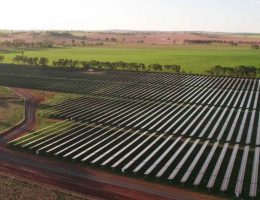Understandably, most would consider the climate and energy news of 2020 in something of a haze. Time no longer makes sense, thanks to a pandemic that skews our sense of past, present and future. Despite the focus on a global disease and rapid action to fight it, it has ended up being a massive climate year for Australia, and the world, too.
It’s nearly impossible to create an exhaustive list of the key moments in climate and energy in 2020, so instead here’s a selection of some of the things that are likely to feed into 2021, and define the year that’s coming (which will be explored in a further post).
The bushfires that shook the world had zero impact on Australian climate politics
It felt like a cynical prediction at the time, but it was extremely clear that the Black Summer bushfires that impacted pretty much every single Australian in some way would end up having a near zero impact on the decision makers right at the top. Australia’s PM Scott Morrison fumbled through those fires, blindsided by a climate-intensified disaster and choosing weirdly to go on a holiday to Hawaii right in the middle of it. In fact, the government’s climate and energy policy went backwards over the course of the year, with a COVID19 recovery pinned on providing government support to fossil fuel industries, alongside a passionate resistance to expanding the country’s climate policies.
There were plenty of predictions that the bushfires would nudge Australia’s leadership of its decades-long climate funk, but it did not. It is, in fact, extremely hard to perceive any difference at all, pre and post bushfires. As the one year anniversary of that crisis approaches in February, it will be important to revisit why such a nationally impactful event has spawned such little change on climate, within the government.
Australia’s technology roadmap is the nothingburger we all expected
As I wrote back in February, the policy offered by the government as a ‘replacement’ for a net zero by 2050 target is truly a classic policy of the Liberal National Party. It creates the illusion of action, but only scratches at the edges; providing cover for avoiding the big ticket, rapid-action, immediate-benefit decarbonisation actions, like accelerating the grid transition or decarbonising transport and buildings. RenewEconomy reported closely on the development of this policy, and how it indeed goes past beyond serving as a distraction and could in fact end up incentivising fossil fuels.
As the year draws to an end, the closest thing we have to anything substantial are a collection of ‘stretch targets’ around technologies like CCS, battery storage and soil carbon; each essentially pointless without some sort of accompanying carbon pricing mechanism. This, the signature policy of the government, is quite embarrassing.
The Pro-Gas push ended up as a light shove
Though the energy minister presented Australia with a “gas-fired recovery” earlier in the year, complete with a very sketchy ‘covid commission‘ soaked with conflicts of interest, the whole thing seemed mostly to fizzle. A plan to figure out how to use government intervention to boost all components of Australia’s fossil gas industries – including extraction, transport, processing and burning – seems to have buckled under intense public pressure. There are still ongoing efforts to provide this support, but the prominent rhetoric does seem to have decreased quite significantly.
The peak of this push came when, in a key moment for energy policy this year, Morrison “threatened” to use public money to build a 1,000 megawatt gas-fired power station in the Hunter Valley, as a punishment for the free market failing to lock in sufficient replacement for the ageing Liddell coal-fired power station. Of course, the ‘replacement’ generation was already locked in from new renewables, and no further capacity was needed for many years; by which time the normal signals would spur that anyway. In the midst of the pandemic, it was a true return to form on awkward, mis-fired and extremely poorly thought out bluster; similar to that of Morrison’s responses during the bushfire crisis. Again; a signal that nothing much had changed.
The world just won’t go away
The 26th Conference of Parties (COP26) event will be held in Glasgow, in November next year. It was meant to be this year, five years on from the Paris agreement, but COVID19 changed all that. The agreement’s member countries have already begun the process of submitting both short and long term updates to their ambitions. Australia’s fossil fuel customers, all seem to be setting long term goals to eliminate fossil fuels within thirty years (though they lack short-term ambition). Many other countries are upgrading and revising their short term ambitions – particularly the US and the UK.
All this while Australia’s government discovers that treading water isn’t quite as easy as it used to be. Already, Australia’s failure to submit revised NDCs earned a spat at a recent “Climate Ambition Conference”. At previous climate events, Australia has a played a major role in ‘cheating’ – weakening global agreement by acting purely in self interest, adding in clauses and exceptions and changes that allow for emissions to increase.
2021 will be different. This cheat won’t be looked on kindly by all the countries that have taken the plunge, or are plunging deeper than before. It’ll be the defining event of the year. It might sound cynical, but I doubt anything will change within Australia’s federal government leadership before then, save for perhaps a distant and weak net zero target. What is perhaps less cynical is the high chance that the rest of the world will have moved on significantly, and that’ll create a massive problem for the advocates of fossil fuels in Australia, in 2021.










